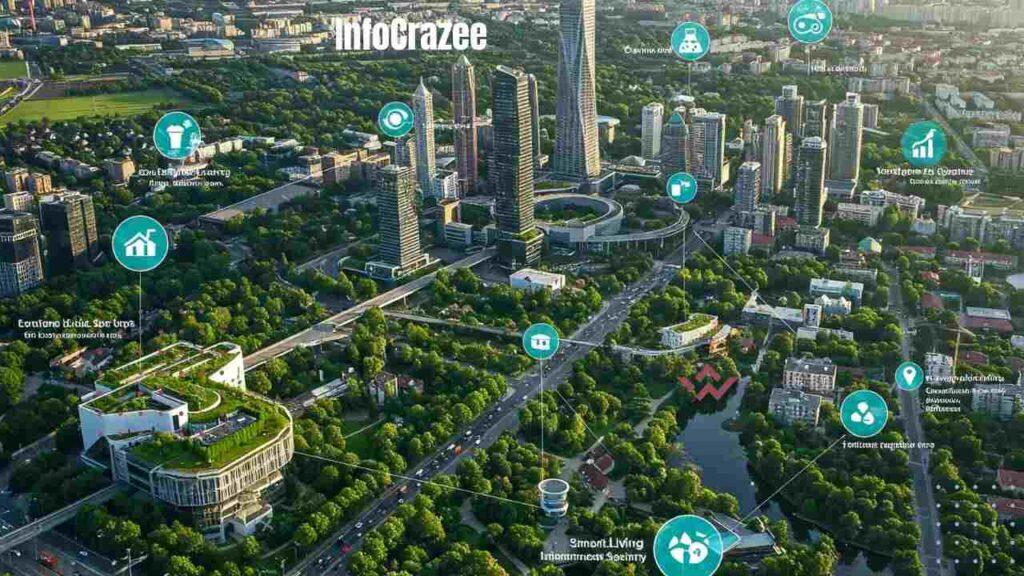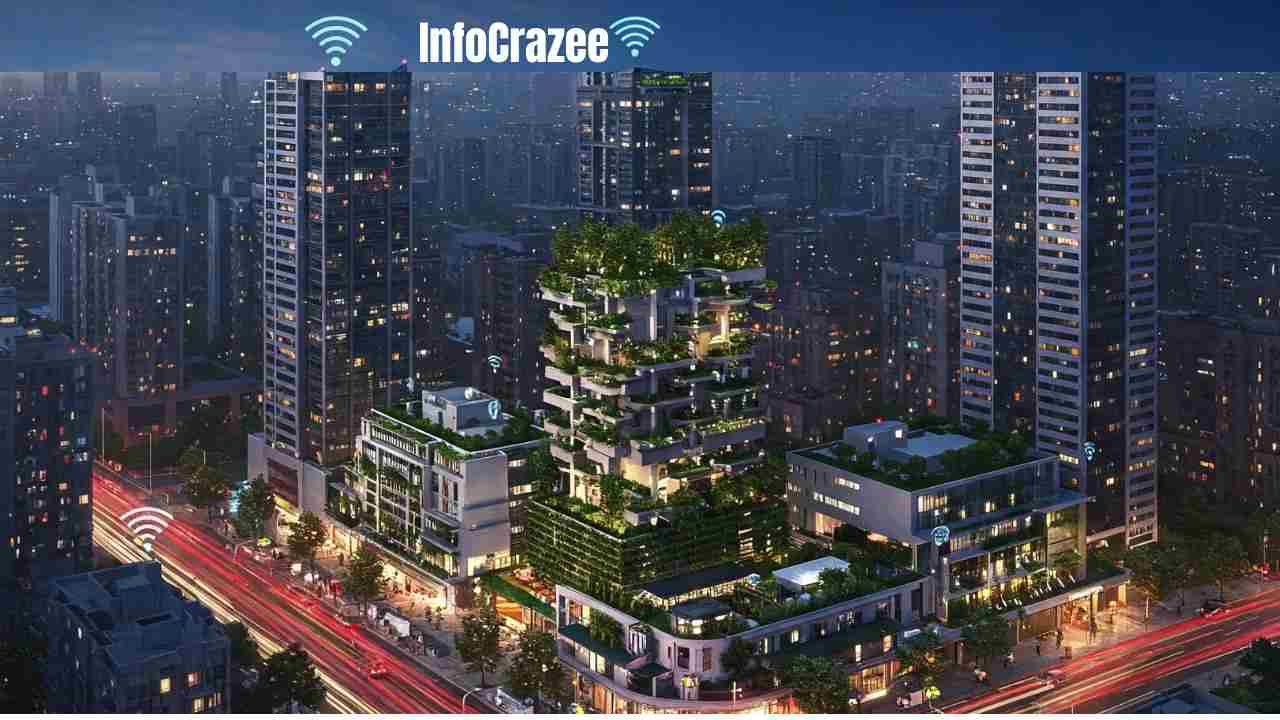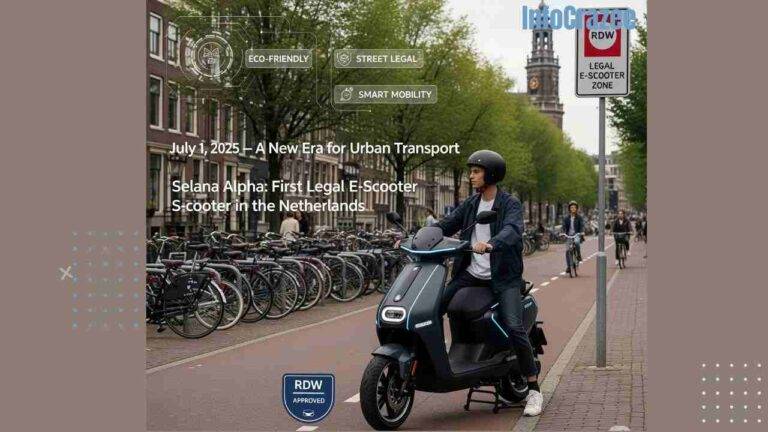Smart Cities: How Technology Is Creating Cleaner, Safer, and Smarter Urban Spaces
Imagine waking up in a city where traffic jams are rare, air quality is closely monitored, and streetlights turn on only when needed. Sounds like science fiction? Not anymore. Thanks to smart technology, cities around the world are getting a major upgrade—becoming more efficient, eco-friendly, and safer for everyone.
In this article, we’re going to explore how smart cities work, the real-life tech making it all happen, and how it’s changing the way we live in urban areas.
What Exactly Is a Smart City?
A smart city uses digital technology, data, and automation to improve daily life in urban areas. This includes everything from managing traffic and reducing pollution to making public services faster and more accessible.

But it’s not just about gadgets or fancy systems. It’s about using technology to solve everyday problems—like waste, crime, overcrowding, and energy usage—so cities can run more smoothly and sustainably.
The Key Goals of a Smart City
Here’s what smart cities are trying to achieve:
- Cleaner environments: Less pollution, smarter energy use, and better waste management.
- Safer communities: Real-time crime detection, smart lighting, and connected emergency services.
- Smarter living: Easier public transport, faster internet, and responsive services.
- More efficient infrastructure: Technology helps manage roads, utilities, and buildings better.
How Technology Is Transforming Cities
Let’s break down the main ways tech is changing urban life:
1. Smart Traffic Management
Stuck in traffic? Smart cities are trying to fix that.
- Sensors and cameras monitor traffic in real time.
- AI-powered traffic lights adjust automatically to reduce congestion.
- Apps like Google Maps or Waze give drivers real-time updates and suggest better routes.
Example: In Barcelona, smart traffic lights prioritize emergency vehicles and reduce travel time significantly.
2. Cleaner Energy and Air
Pollution is a big problem in cities—but technology is helping.
- Air quality sensors track pollution levels across neighborhoods.
- Smart grids help manage energy more efficiently, using solar or wind where possible.
- Smart buildings use less electricity and water by adjusting automatically to weather and usage.
Example: Singapore uses smart sensors to monitor environmental conditions and adjust public cooling systems.
3. Safer Streets
Safety is one of the biggest benefits of smart cities.
- Smart streetlights turn on only when someone is nearby—saving energy and improving security.
- Connected surveillance helps police respond faster to crimes.
- Panic buttons and emergency alert systems keep people informed and protected.
Example: In Chicago, a network of smart sensors called Array of Things helps detect crime hotspots and supports public safety efforts.
4. Waste Management
Overflowing garbage bins? Not in a smart city.
- Smart bins send alerts when they’re full.
- GPS-tracked garbage trucks take the best routes to save fuel.
- Recycling sensors help residents sort their waste better.
Example: Seoul, South Korea, uses smart bins that weigh trash and charge people based on how much waste they produce—encouraging recycling.
5. Better Public Transportation
Commuting shouldn’t be a daily headache.
- Real-time bus/train updates reduce waiting times.
- Smart cards and mobile apps make paying and planning your ride easier.
- Electric and autonomous vehicles are becoming part of public fleets.
Example: In London, the Oyster card system and real-time transit info help over 9 million people get around daily.
Real-Life Benefits for Everyday People
You don’t have to be a tech geek to enjoy what smart cities offer. Here’s how everyday life improves:
- Shorter commutes = more time with family or to relax
- Cleaner air = better health, especially for kids and seniors
- Lower utility bills = smart energy systems reduce waste
- Faster response times = help arrives sooner in emergencies
- More convenience = apps and automation make city life easier
Is Your City Becoming Smart?
You might already live in a city that’s turning smart—even if it’s happening quietly. Look for these signs:
- Public Wi-Fi and smart kiosks in common areas
- Digital signs showing real-time updates on traffic or transport
- Mobile apps for city services like bill payments, parking, or complaints
- Smart lighting and surveillance in parks and streets
If these things are popping up around you, congratulations—your city is leveling up!
What Can You Do?
Even if you’re not a city planner, you can be part of the smart city movement:
- Stay informed: Follow local updates about smart projects.
- Use the tech: Try out apps and services your city offers.
- Give feedback: Many cities take citizen input seriously to improve systems.
- Support green initiatives: Small choices like using public transport or recycling can make a big impact.
Final Thoughts
Smart cities aren’t just a tech trend—they’re a real solution to some of the biggest challenges modern cities face. Cleaner air, better safety, and smarter living aren’t just possible; they’re already happening.
As more cities adopt these innovations, life in urban areas will become more efficient, enjoyable, and sustainable for all of us. And who knows? Maybe one day, we’ll look back and wonder how we ever lived without them.
FAQs
Q1: Are smart cities expensive to build?
A: They can be at first, but over time, smart systems save money by cutting waste, reducing energy costs, and improving service efficiency. Many cities start small and scale up gradually.
Q2: Will smart cities invade our privacy?
A: Privacy is a valid concern. Good smart city systems balance technology with data protection. Transparent policies and strong cybersecurity are key to keeping personal data safe.
Q3: Can smaller towns become smart cities?
A: Absolutely! You don’t need to be a big metropolis. Even small towns can adopt smart technologies like smart lighting, waste tracking, and mobile service apps to improve life for residents.
Let me know if you’d like this as a downloadable article or need help designing it into a web-friendly post for Infocrazee!






